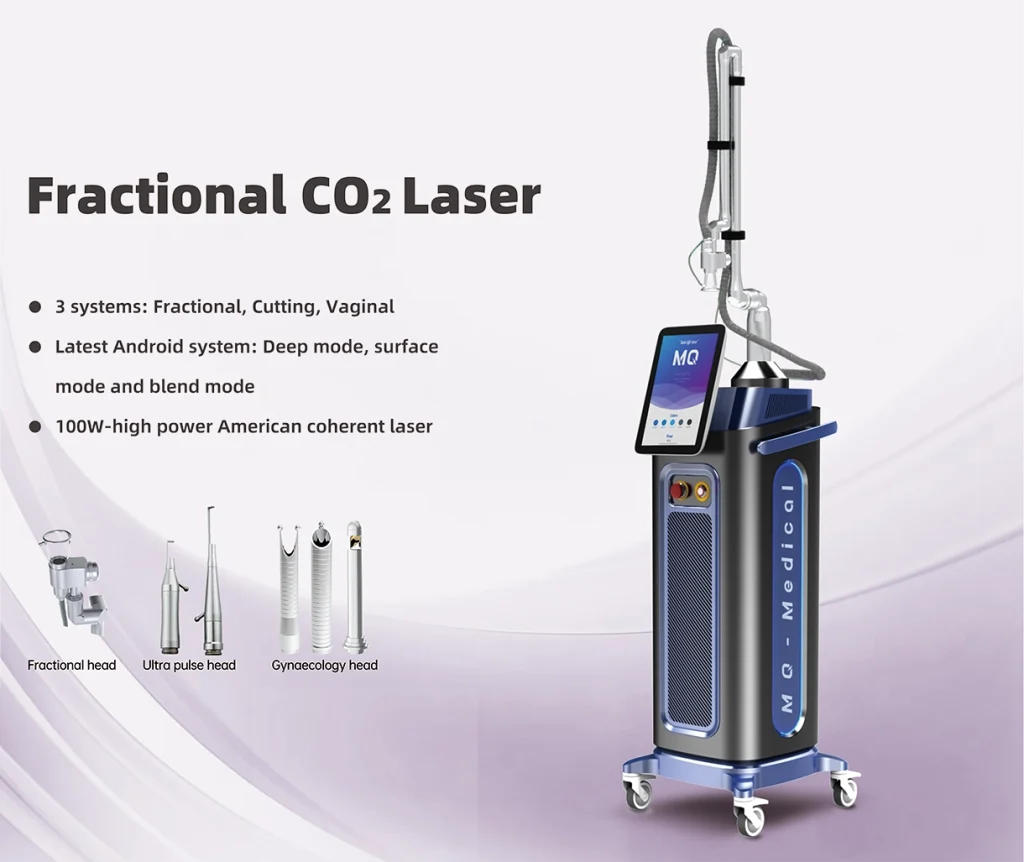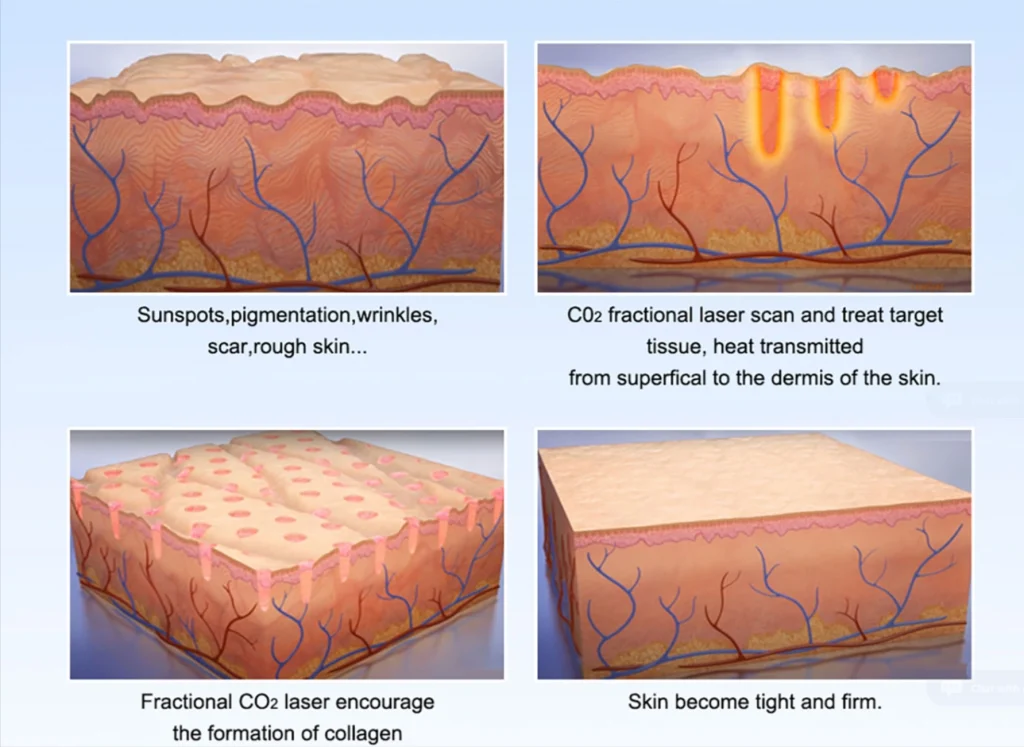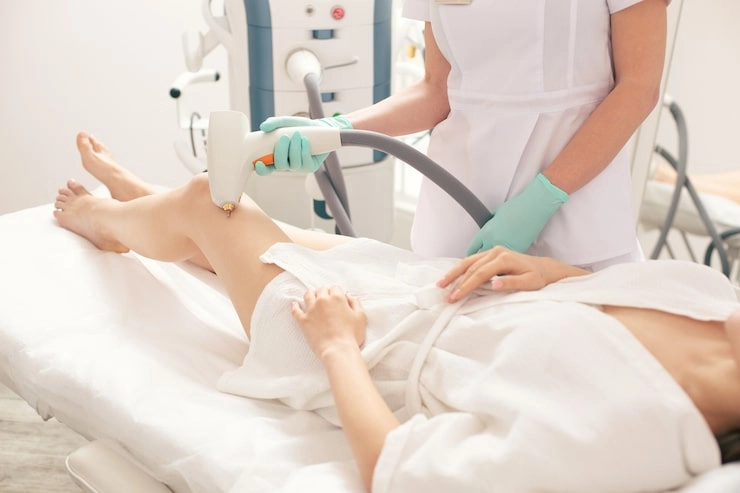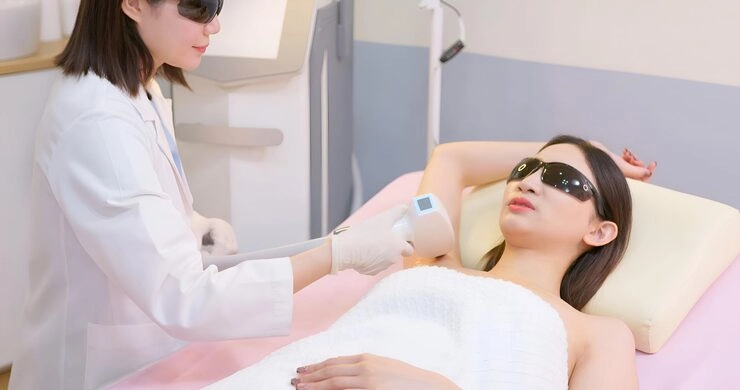
Refining the delicate shape of the eyelids is a careful job. For this reason, the tool a surgeon chooses is extremely important. In blepharoplasty—a procedure that requires great skill, accuracy, and a strong focus on safety—the instrument used for making cuts and shaping tissue can deeply influence the entire operation. It also affects the patient’s healing process.
Among the top technologies available today, CO2 lasers and radiosurgical devices are two main options for modern aesthetic experts. This article offers a fair look into how each system works. It will help you understand their different mechanisms and how they are used to get the best possible results in blepharoplasty.
The Capabilities of the CO2 Laser in Eyelid Procedures
The CO2 laser is a very flexible tool. Doctors use it in two different ways to make eyelids look younger. First, it can be used as a tool for making very exact cuts during the operation. Second, it can be used as a system for an additional treatment to improve the skin’s surface.
1. The CO2 Laser as an Incisional Tool
- How It Works: When used for cutting, the system directs a focused beam of CO2 laser energy onto the skin. This energy instantly turns the soft tissue into vapor, which creates a very clean cut. A major benefit of this method is its power to seal small blood vessels as it cuts. This happens at the same time. This process, called coagulation, results in very effective bleeding control, which is known as hemostasis. Having less bleeding during the operation can also lead to fewer bruises after.
- Precision and Control:Modern CO2 lasers are quite advanced. The ultra-pulse models, in particular, give surgeons amazing control over the energy they use. They can manage it with high accuracy. This level of control is absolutely essential. It is especially needed when a doctor is working on the thin tissues of the eyelid, which are, on average, only 0.3mm thick.
2. Fractional CO2 Laser for Adjunctive Skin Resurfacing

- Mechanism:When the laser is in its fractional mode, its function changes completely. The single laser beam is split into thousands of tiny, microscopic columns of light. These light columns treat just a fraction of the skin in a target area. They leave the surrounding tissue completely untouched. This action starts a strong healing response inside the skin, causing it to rebuild its collagen.

- Benefits:It is important to understand that this treatment is not part of the surgical cut itself. Instead, it is often done either with the blepharoplasty or as a later treatment. It is an extremely effective way to tighten loose, crepey skin. It also works very well to reduce fine lines and improve the general texture of the skin all around the eyes. This gives a more complete and youthful look.
An Examination of Radiosurgical Devices
Radiosurgical tools work differently from lasers. They use high-frequency radio waves, not light, to perform surgical cuts.
- The Mechanism Behind Radiosurgery:These devices use a very fine electrode tip. This tip delivers high-frequency energy (usually around 4.0 MHz) directly to the skin tissue. This energy makes the water inside the tissue’s cells vibrate very quickly and heat up. This action causes the cells to turn into vapor, which effectively cuts the tissue, one layer of cells at a time.
- Minimal Lateral Thermal Spread:Radiosurgery is a method that does use heat. However, its main benefit is that very little of this heat spreads to the nearby skin. The cutting effect is highly focused right at the tip of the electrode. Because of this, there is less accidental heat damage to the tissue next to the cut. For the patient, this can mean less inflammation and swelling right after the surgery.
- Clean Incisions:This technology is well known for making cuts that are incredibly clean and smooth. There is very little to no charring on the edges of the incision. This feature helps the wound to heal in a very neat and aesthetically pleasing way.
Key Technical Differences in Blepharoplasty Surgery
When a surgeon uses these tools to make the main cut during surgery, the choice between them involves small but important differences. It all comes down to how each tool works with the body’s tissues.
- Energy Delivery and Tissue Interaction:CO2 lasers use powerful light energy to vaporize tissue. As they do this, they also provide strong coagulation, which helps stop bleeding. On the other hand, radiosurgery uses the energy from radio waves. This energy turns the fluid inside cells into steam, which makes a cut with very low heat spreading to the sides.
- Control and Safety:In the hands of an experienced surgeon, both technologies are very safe and offer fantastic control. Which tool a surgeon chooses often comes down to their personal experience. It depends on their training and on the feel of the tool in their hands during the work. The CO2 laser’s power to stop bleeding is a big safety plus. At the same time, the very low heat spread from radiosurgery is valuable for keeping delicate nearby structures safe.
- Impact on Healing Time:Doctors who prefer radiosurgery often say that its low thermal damage might lead to a quicker healing process. They believe it can cause less initial swelling. In contrast, the fantastic bleeding control of the CO2 laser can mean fewer bruises. This also helps a patient have a smoother recovery. In the real world, the final quality of the scar and the long-term visual results are often very similar. This is true as long as the surgery is done by a skilled and careful doctor.
Aesthetic Outcomes: A Combined Approach
The most beautiful results often come from a smart approach. This involves understanding the special strengths of each technology and sometimes using them together.
- Smooth Contours with Incisional Tools:Both radiosurgical devices and CO2 lasers are great at making the clean cuts needed to reshape the upper or lower eyelids. The choice often depends on the surgeon’s strategy for managing how the tissue reacts and controlling any bleeding.
- Skin Tightening with Adjunctive CO2 Lasers: Some patients have extra concerns. They may have issues with skin texture, fine lines, or general looseness in addition to needing excess skin or fat removed. For these patients, a combination works best. A surgical blepharoplasty followed by a fractional CO2 laser treatment can provide a truly complete rejuvenation. The surgery fixes the structure, while the laser improves the skin’s surface in ways surgery cannot.
Practical Considerations for Beauty Professionals
Beyond how well a device works, other factors are important for clinics. Usability and support play a big part in the selection process.
- Ease of Use and Training:It is wise to look for devices that have simple controls and come with thorough training programs. For instance, manufacturers like MQLASER offer detailed instruction guides and live remote training sessions. These resources are there to make sure every user can become skilled and confident.
- Maintenance and Reliability:A medical device is a big, long-term investment for any clinic. Systems that are built with high-quality parts, such as a Coherent RF-excited laser tube, tend to be more dependable. They also usually have a longer operational life. Smart features, like a purge-air system designed to keep the machine’s lenses clean, also help to lower the amount of required upkeep.
- After-Sales Support:Always choose a supplier known for providing strong technical help and a good warranty. A company like MQLASER shows its commitment by supporting professionals with lifetime service plans. They also offer OEM/ODM customization, which is backed by a knowledgeable research and development team.
Final Thoughts on Choosing the Right Device
The conversation is not really about whether CO2 lasers are “better” than radiosurgery. It is about figuring out which tool is the right one for the specific job a surgeon needs to do. For making surgical cuts in a blepharoplasty, both are wonderful choices that bring their own unique benefits to the operating table.
CO2 Lasers provide amazing bleeding control. They also offer the powerful extra benefit of being a great tool for follow-up skin resurfacing.
Radiosurgical Devices are valued highly for their very precise cutting. They do this with very little heat spread, which can help reduce swelling right after the procedure.
In the end, the best result in any surgery comes from a combination of the surgeon’s skill and the right technology. The key is to match the tool to the specific and unique needs of each patient.

FAQs:
Q1: Which technology offers faster recovery after blepharoplasty?
A: Both technologies are made for an efficient healing process. The low heat spread from radiosurgery can result in less initial swelling. On the other hand, the CO2 laser’s great hemostatic (bleeding control) ability can lead to fewer bruises after the surgery. The speed of recovery truly depends a lot on the surgeon’s personal technique and on the individual patient’s healing ability.
Q2: Is the fractional CO2 laser safe for delicate eye-area treatments?
A: Yes. It is safe when a trained and qualified professional uses it. Fractional CO2 lasers can be used to safely treat the delicate skin around the eyes. Modern systems have very precise and adjustable settings. These settings control the depth and intensity of the treatment, allowing the laser to stimulate collagen deep in the skin layers while keeping the procedure safe.
Q3: Can beginners easily learn how to operate MQLASER’s machines?
A: Yes. MQLASER is very dedicated to user education and training. The company gives users full manuals, helpful instructional videos, and live one-on-one video training sessions. This is all done to make sure that even people new to the device can become proficient and learn to use it safely and to its full potential.
















